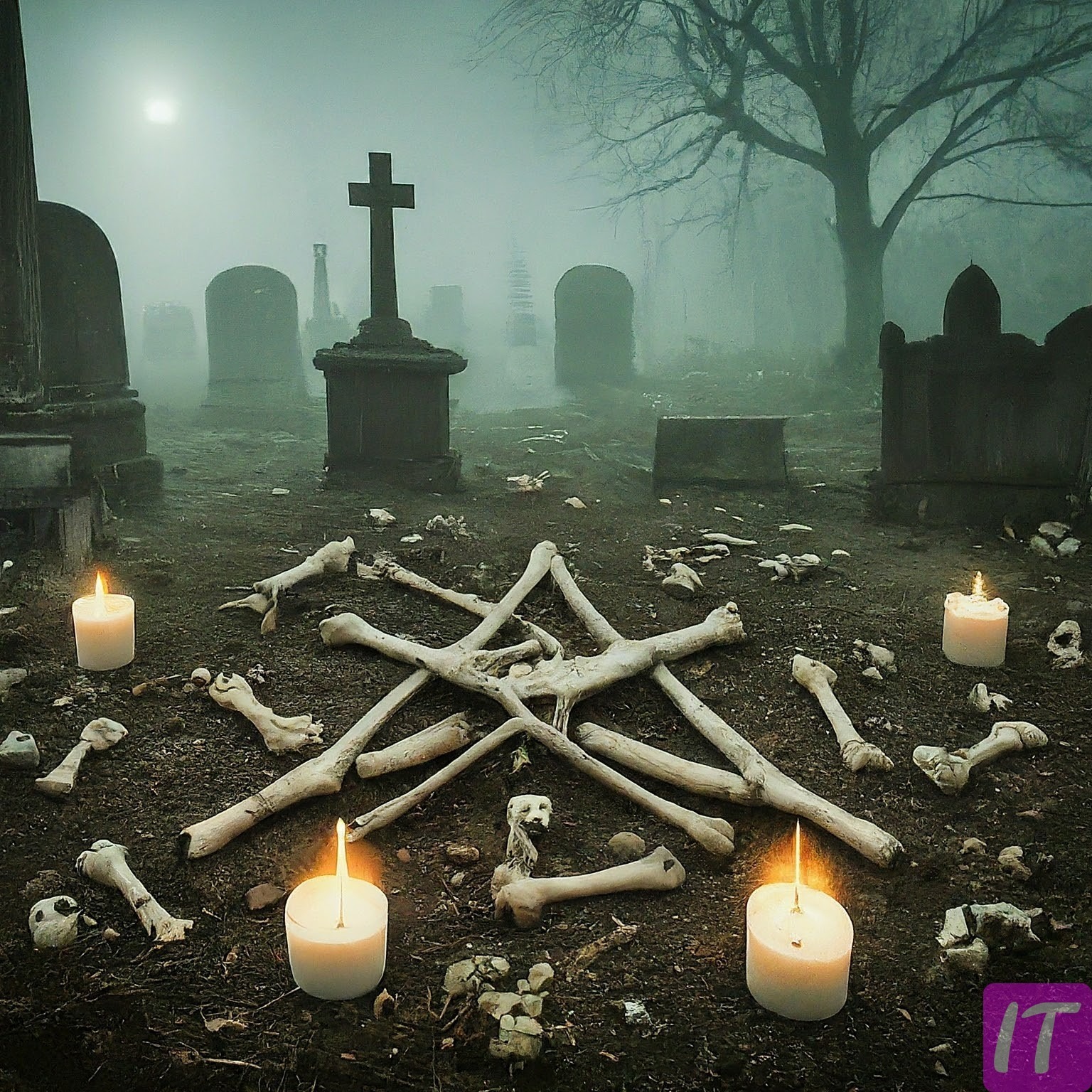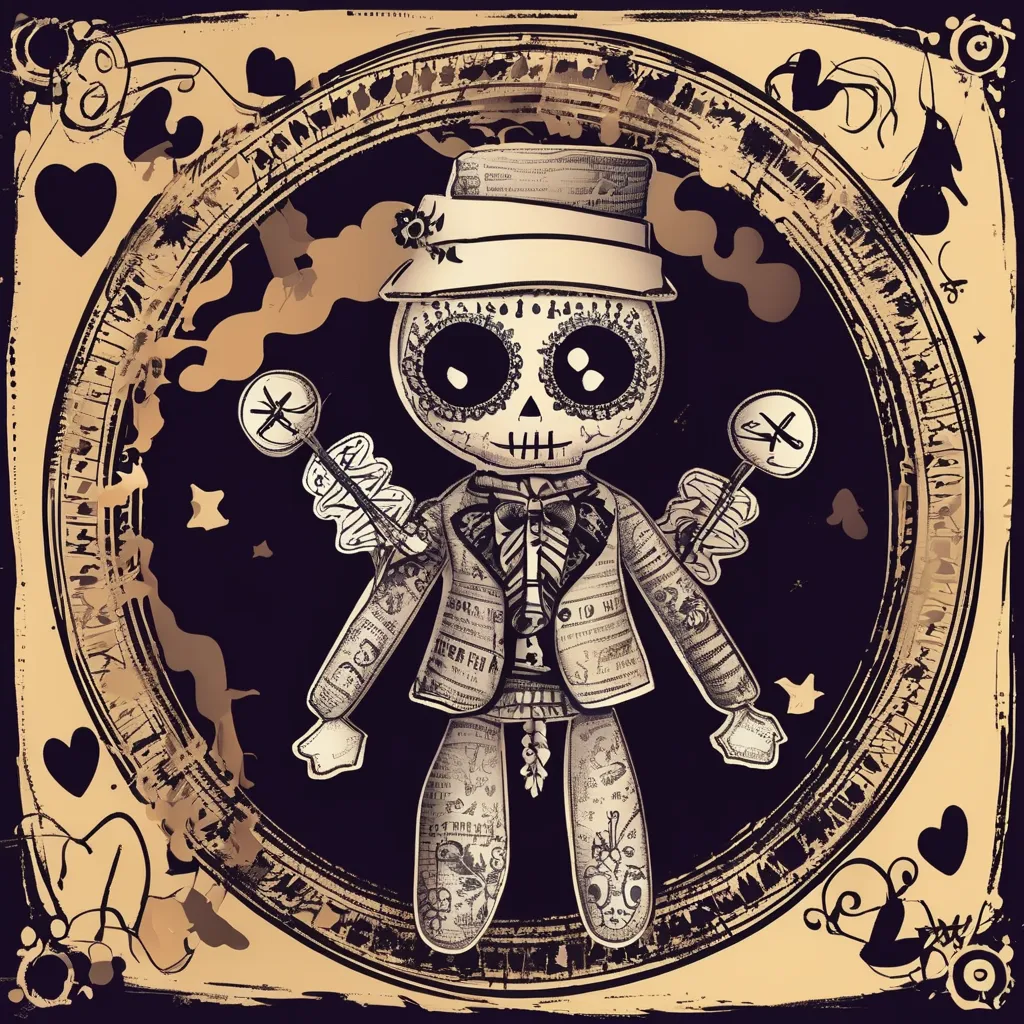Is Black Magic Real? (Scary)
ITEACH.TOP | LEARN EVERYTHING
In the shadowy corners of history, black magic has woven an intricate tapestry that has both fascinated and terrified societies for millennia. As we delve into the annals of time, it becomes clear that the practice and belief in black magic spans across cultures and eras. Evaluating the origins, evolution, and impact of black magic provides a comprehensive understanding of its enduring presence and influence on humanity.
Origins of Black Magic in Ancient Civilizations
Black magic, often associated with malevolent practices and the invocation of supernatural powers, finds its roots deeply embedded in ancient civilizations. Historical records suggest that early human societies practiced forms of magic to manipulate natural phenomena and gain favor from gods or spirits. In Mesopotamia, one of the world’s oldest civilizations, magic was a significant part of religious rituals used for both protective and destructive purposes.
In ancient Egypt, black magic was an extension of their complex belief system involving gods and the afterlife. The Egyptians used spells and magical texts inscribed on papyri and tomb walls, brimming with incantations meant to protect the dead in the afterlife and curse enemies. Similarly, the ancient Greeks and Romans incorporated magic into their daily lives, attributing unexplained occurrences to the work of sorcerers and witches.
Magic in the Indus Valley Civilization and early Chinese societies also had dual aspects, involving both positive and negative practices. Rituals and potions created by shamans aimed at healing were mirrored by actions intended to harm adversaries or acquire power. These early manifestations of black magic laid the groundwork for its evolution throughout history.
The Historical Impact of Black Magic Practices
The impact of black magic on historical societies was significant, shaping cultural beliefs and social structures. Historians have noted that black magic practices were often used as a tool for social control. In many cultures, the fear of black magic was used to maintain order and authority. Rulers and religious leaders would manipulate these fears to suppress dissent and solidify their power.
Black magic was also used as a weapon in conflicts. During times of war and strife, accusations of sorcery and witchcraft were common. Those accused were often subjected to severe punishment or execution, serving as both a deterrent and a method of eliminating opposition. This grim utilization of black magic accusations had a profound effect on the social fabric of these societies.
In some cultures, black magic played a direct role in the distribution of power. Families believed to have control over dark arts often rose to prominence, while those suspected of practicing malevolent magic faced persecution. This dichotomy created an environment where fear and reverence towards black magic could dictate social hierarchies and interpersonal relationships.
The Role of Sorcery in Medieval Societies
Medieval Europe saw a resurgence of interest in sorcery and black magic, influenced by the remnants of ancient traditions and the changing socio-political landscape. Sorcery during this period was deeply intertwined with religion, as the Church sought to distinguish its divine miracles from the nefarious acts of sorcerers and witches. This era is marked by the heightened paranoia and persecution of those believed to be practicing black magic.
Magical practices during the medieval period were diverse, ranging from simple charms and amulets to complex rituals. The Malleus Maleficarum, a treatise on witch-hunting, published in the late 15th century, provided a comprehensive guide to identifying and prosecuting alleged witches. This text significantly influenced the methods and intensity of witch trials across Europe.
Sorcery was also believed to impact health and wellbeing. Medieval physicians often attributed unexplained illnesses to maleficium (harmful magic), leading to a merging of medical and magical practices. The fear of black magic infiltrated all aspects of life, from crop failures to personal misfortunes, leading to widespread suspicion and social unrest.
Examination of Witch Hunts in European History
The witch hunts of Europe stand as a stark testament to the fear and hysteria surrounding black magic. From the late 15th to the early 18th centuries, tens of thousands were accused of witchcraft, and many were executed. This period, known as the Witch Craze, was characterized by intense fear, religious fervor, and social paranoia.
Witch hunts served multiple functions within European society. They were a means to exert control over women, who were often the primary targets of these hunts. In a patriarchal society, accusations of witchcraft were used to suppress female autonomy and assert male dominance. The torturous methods employed to extract confessions reveal the extreme lengths to which society would go to eradicate perceived threats.
Religious conflicts also played a significant role in the witch hunts. The Reformation and Counter-Reformation periods saw heightened religious tension, with both Protestant and Catholic authorities using witch hunts to demonstrate their piety and commitment to rooting out heresy. This religious zeal fueled the persecution and intensified the brutality of the trials.
Black Magic in Ancient Egyptian Culture
Ancient Egyptian culture is renowned for its sophisticated beliefs and practices concerning the afterlife, and black magic was an integral part of this spiritual framework. Egyptian magicians, known as heka, wielded great influence, employing spells and charms for protection, healing, and cursing. The power of the heka was believed to derive from the gods, making their magical practices both revered and feared.
Papyri from ancient Egypt, such as the Turin Erotic Papyrus, provide detailed accounts of magical spells and rituals. These texts include incantations for summoning spirits, invoking divine intervention, and hexing enemies. The Book of the Dead, a guide for the deceased’s journey in the afterlife, is replete with magical spells meant to ensure safe passage and ward off malevolent forces.
The Egyptians’ use of black magic was not limited to the supernatural realm. It was a practical tool in political and social spheres as well. Pharaohs and high-ranking officials often employed magicians to secure their rule and remove rivals. The integration of black magic into everyday life underscored its significance within ancient Egyptian society.
The Dark Arts in African Tribal Traditions
African tribal traditions are rich with spiritual and magical practices, many of which involve elements that could be classified as black magic. Witchcraft, known locally by various names such as “juju” or “voodoo,” plays a crucial role in the cultural and social lives of many African communities. These practices often have dual purposes, serving both protective and harmful functions.
In many African societies, witch doctors or shamans act as intermediaries between the physical world and the spiritual realm. They conduct rituals to heal ailments, protect against evil spirits, and curse enemies. The belief in the efficacy of these practices is deeply ingrained, and the fear of malevolent magic influences social behavior and community interactions.
Accusations of witchcraft can have severe consequences in African communities. Those suspected of practicing black magic may face ostracism, violence, or even death. This social control mechanism contributes to the regulation of behavior and the maintenance of communal harmony. The dark arts are thus a double-edged sword, simultaneously revered and feared.
Mystical Practices in Early Mesopotamia
Mesopotamia, often referred to as the cradle of civilization, was also a hub for mystical and magical practices. The ancient Mesopotamians believed in a pantheon of gods and demons, whose favor could be courted or wrath incurred through magical rituals. Magic was an essential aspect of both religious and daily life, encompassing a range of practices from benevolent to malevolent.
Cuneiform tablets, some of the earliest written records, include spells and incantations aimed at invoking deities or repelling evil forces. The Mesopotamian magicians, known as ashipu, specialized in exorcisms and had a profound influence on the society’s understanding of health and illness. Diseases were often attributed to demonic possession, and the ashipu would perform elaborate rituals to cleanse the afflicted.
The Mesopotamians also believed in the existence of sorcerers who wielded black magic for destructive purposes. These sorcerers were thought to cast evil spells, cause illnesses, and manipulate natural events. The fear of such individuals was pervasive, leading to rigorous measures to identify and neutralize them. This belief system underscored the power and peril associated with black magic.
Black Magic and Its Influence on Ancient Rome
In ancient Rome, the belief in and practice of black magic was both widespread and contentious. Magic was viewed with suspicion by the Roman state, which saw it as a threat to public order and morality. However, despite legal prohibitions, black magic continued to thrive in the shadows, practiced by those seeking power, revenge, or protection.
Roman literature and legal texts provide ample evidence of the prevalence of black magic. The Roman poet Ovid, in his work “Metamorphoses,” describes various magical rites and spells. The historian Tacitus notes instances of high-ranking officials and even emperors resorting to sorcery. The Roman law, “Lex Cornelia de sicariis et veneficiis,” criminalized the practice of harmful magic and prescribed severe penalties for those found guilty.
Black magic in Rome often entailed the use of potions, curses, and amulets. Practitioners were believed to summon spirits and manipulate the natural world to achieve their ends. The fear of sorcery led to the persecution of those suspected of engaging in these dark arts, reflecting the deep-seated anxieties surrounding the supernatural.
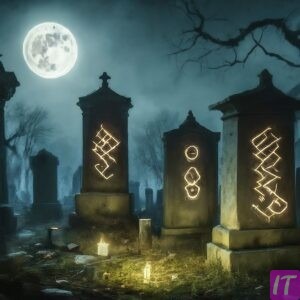
The Evolution of Witchcraft Through the Ages
Witchcraft and black magic have undergone significant transformations over the centuries, influenced by cultural, religious, and social changes. From ancient rituals to modern occult practices, the evolution of witchcraft reveals a complex and multifaceted history.
In the ancient world, witchcraft was often associated with the worship of nature and the manipulation of natural forces. Early practitioners, such as shamans and sorcerers, were both respected and feared for their perceived abilities. As civilizations evolved, so did the practices and perceptions of witchcraft, with different cultures attributing varying degrees of malevolence to these mystical arts.
The medieval and early modern periods saw the height of witch hunts and the demonization of witchcraft. Accusations of black magic were frequently rooted in social, religious, and political conflicts. The Enlightenment era brought a shift in attitudes, with a growing emphasis on rationality and skepticism towards supernatural claims. However, witchcraft persisted, adapting to new cultural contexts and continuing to captivate the human imagination.
Case Studies of Alleged Black Magic Throughout History
The historical record is replete with case studies of alleged black magic, each offering insights into the societal fears, beliefs, and punitive measures of the time. These cases often reveal the underlying social dynamics and the peril faced by those accused of practicing dark arts.
One of the most infamous cases is that of the Salem Witch Trials in 1692. In the Puritan community of Salem, Massachusetts, a series of accusations, trials, and executions unfolded, fueled by mass hysteria and religious zeal. The trials resulted in the execution of 20 individuals and the imprisonment of many others, leaving a lasting scar on American history.
In Europe, the Bamberg Witch Trials (1626-1631) in Germany are noteworthy for their scale and brutality. Hundreds of people, including high-ranking officials, were accused of witchcraft and executed. The trials were marked by extreme measures to extract confessions, reflecting the deep paranoia and fear of black magic at the time.
Similar cases can be found in various cultures, each demonstrating the pervasive fear and impact of black magic. These historical accounts underscore the human tendency to attribute misfortune and unexplained events to supernatural causes, often leading to tragic consequences for those accused.
The Influence of Black Magic in Victorian England
The Victorian era, known for its strict moral codes and scientific advancements, also experienced a fascination with the supernatural, including black magic. This period saw a revival of interest in occult practices, fueled by spiritualism and the exploration of ancient mystical traditions.
Victorian England witnessed a proliferation of secret societies and occult groups, such as the Hermetic Order of the Golden Dawn. These organizations delved into esoteric knowledge, conducting rituals and ceremonies that often incorporated elements of black magic. The blend of mystical practices with emerging scientific inquiry created a unique cultural milieu.
Literature and popular culture of the time also reflected this fascination. Gothic novels like Bram Stoker’s “Dracula” and the works of Arthur Conan Doyle explored themes of the supernatural and black magic. These stories captivated the public imagination, contributing to the enduring allure of the dark arts.
Ritualistic Practices in Native American Tribes
Native American tribes have long held rich traditions of spirituality and ritualistic practices, some of which include elements of black magic. These practices were deeply rooted in their cosmology and understanding of the natural world, serving both protective and destructive purposes.
Shamans and medicine men or women played pivotal roles in Native American communities, acting as healers, spiritual guides, and mediators between the human and spirit worlds. Their rituals often involved chanting, drumming, and the use of sacred herbs and objects. While many of these practices aimed at healing and protection, there were also rituals intended to curse enemies or seek vengeance.
The introduction of European settlers led to significant changes and challenges for Native American spiritual practices. The fear of black magic and the suppression of indigenous rituals by settlers and missionaries posed a threat to these traditional practices. Despite these pressures, many Native American tribes have preserved their spiritual heritage, maintaining the rituals and beliefs that have been passed down through generations.
The Spread and Persecution of Black Magic in Asia
In Asia, black magic has a long and varied history, reflecting the region’s diverse cultures and belief systems. From ancient India to imperial China, the practice and persecution of black magic have played significant roles in shaping societal norms and behaviors.
In ancient India, black magic, known as “tantra” and “mantra,” was intertwined with religious practices. Tantric traditions often involved complex rituals and the invocation of deities for both benevolent and malevolent purposes. The fear of black magic led to social ostracism and persecution of those suspected of practicing these dark arts.
Imperial China also had a fraught relationship with black magic. The fear of sorcery was prevalent, and legal measures were often taken to suppress it. Chinese texts from various dynasties document cases of alleged witchcraft and the severe penalties imposed on those found guilty. These records provide insights into the social and political dynamics surrounding black magic in China.
Japan, too, had its own traditions of black magic, known as “onmyodo.” Practitioners, called onmyoji, wielded significant influence, with their rituals and divinations affecting political decisions and personal fortunes. The blended practices of Shintoism and Buddhism further enriched the mystical landscape, contributing to the complex history of black magic in Asia.
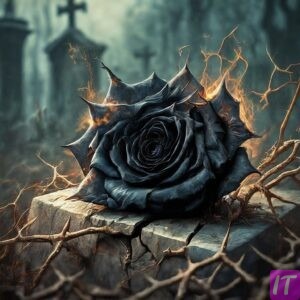
The Role of Secret Societies in Black Magic History
Throughout history, secret societies have often been linked with black magic, serving as clandestine groups where esoteric knowledge and magical practices were preserved and transmitted. These societies played a crucial role in maintaining mystical traditions, often operating in the shadows to avoid persecution.
One of the most notable secret societies is the Freemasons, who have long been shrouded in mystery and speculation about their involvement in occult practices. While the Freemasons publicly emphasize their philanthropic and moral teachings, rumors of their engagement in black magic persist, fueled by their secretive nature and enigmatic rituals.
The Hermetic Order of the Golden Dawn, founded in the late 19th century, is another example. This society aimed to teach and practice the occult sciences, blending elements of alchemy, Kabbalah, and ceremonial magic. Many prominent figures in the occult community, including Aleister Crowley, were associated with the Golden Dawn, contributing to its reputation for sinister practices.
Other lesser-known societies, such as the Rosicrucians and the Illuminati, have also been linked to black magic. These groups, often composed of elite members of society, claimed access to ancient wisdom and magical power, further perpetuating the association between secret societies and the dark arts.
Historical Texts and Manuscripts on Black Magic
Historical texts and manuscripts provide valuable insights into the practice and perception of black magic across different cultures and eras. These documents, often written in cryptic language and symbols, reveal the complexities and nuances of magical traditions.
The “Ars Goetia,” part of the larger grimoire known as “The Lesser Key of Solomon,” is one of the most famous texts on black magic. This medieval manuscript details the summoning and control of demons, offering a glimpse into the dark rituals and incantations believed to wield supernatural power.
The “Necronomicon,” a fictional grimoire created by H.P. Lovecraft, has also gained notoriety. While not a historical text, its influence on modern occult practices and popular culture underscores the enduring fascination with black magic. The “Necronomicon” is often cited in discussions of the dark arts, blurring the lines between myth and reality.
In addition to grimoires, ancient texts such as the Egyptian “Book of the Dead” and the Mesopotamian “Enuma Elish” contain elements of black magic, reflecting the integral role of the supernatural in these cultures. These texts offer valuable perspectives on the historical context and evolution of black magic practices.
Superstitions and the Fear of Black Magic
Superstitions surrounding black magic have persisted throughout history, shaping cultural beliefs and behaviors. The fear of black magic often stemmed from the unknown and the inexplicable, leading people to attribute misfortunes and tragedies to malevolent forces.
In many cultures, superstitions about black magic were intertwined with religious beliefs. The existence of witches, sorcerers, and demons was often accepted as a natural part of the spiritual landscape. This belief system created a fertile ground for the proliferation of black magic and the fear it engendered.
Superstitions also influenced daily life and social interactions. Protective charms, rituals, and amulets were commonly used to ward off evil forces. These superstitions varied widely across cultures but shared a common thread of seeking to mitigate the perceived threat of black magic.
The legacy of these superstitions can still be seen in modern times. Many people continue to believe in curses, hexes, and the power of black magic, reflecting the deep-seated and enduring fear of the supernatural. This belief in the dark arts often coexists with contemporary scientific and rational perspectives, highlighting the complex and multifaceted nature of human belief systems.
Influences of Black Magic on Modern Occult Practices
Black magic’s influence on modern occult practices is profound, with many contemporary traditions drawing from ancient rituals and beliefs. The resurgence of interest in the occult in the 20th and 21st centuries has led to a renewed exploration of black magic, often reinterpreted in new cultural contexts.
Modern occult practitioners, or neo-pagans, often incorporate elements of black magic into their rituals, blending them with other mystical and spiritual traditions. This eclectic approach reflects a desire to connect with ancient wisdom while adapting it to contemporary needs and sensibilities.
The internet has played a significant role in the dissemination of black magic and occult knowledge. Online forums, websites, and social media platforms have created a global community of practitioners and enthusiasts, facilitating the exchange of ideas and practices. This digital renaissance has contributed to the evolution and diversification of modern occult traditions.
The impact of black magic on popular culture is also noteworthy. Films, books, and television shows frequently explore themes of witchcraft and the supernatural, perpetuating the fascination with the dark arts. This cultural representation influences public perception and continues to shape the narrative around black magic.
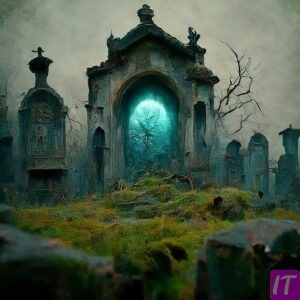
Religious Interpretations of Black Magic Over Centuries
Religious interpretations of black magic have evolved over centuries, reflecting the changing dynamics between faith, power, and the supernatural. Different religious traditions have offered varying perspectives on black magic, often categorizing it as a heretical or blasphemous practice.
In
